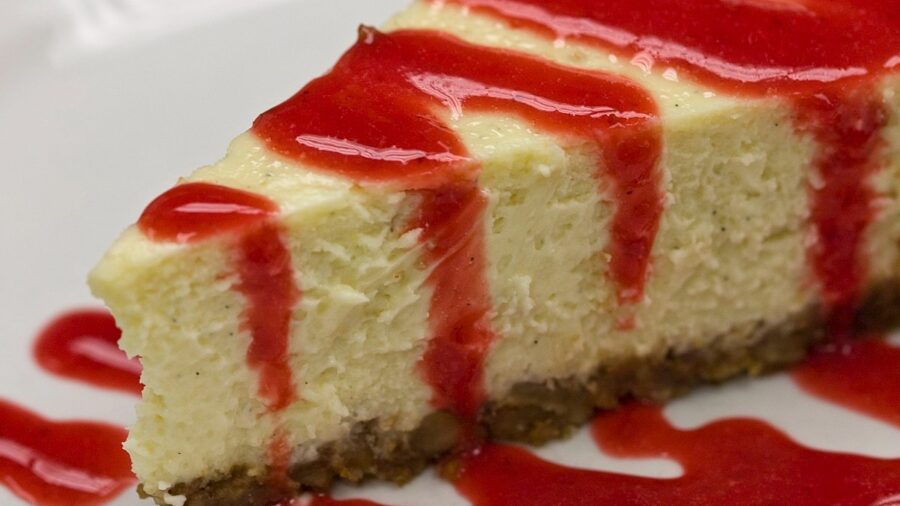3D Printers Now Make Edible Food, But Does It Taste Good?
3D printers that cook using lasers can customize every single bite of a meal.

3D printers have been widely used for years, making everything from high-fashion to prosthetics, and with the latest breakthrough from Columbia University, the technology can now make a cheesecake. A new study published in Nature explains the incredible process of transforming paste into an edible dessert over only 30 minutes. Dr. Jonathan Blutinger insists that the experience of eating 3D-printed food is similar to Willy Wonka‘s three-course dinner chewing gum in that every bite can provide a new burst of flavor, giving the baker ability to localize highly specific flavors in every meal.
It’s that last feature that makes the food from Columbia University’s 3D printers truly stand out compared to other companies that have been printing food for years. It’s possible to buy vegan steaks, and printed sugars and eat at a restaurant with a 3D printer in the kitchen instead of an oven. Researchers adjusted the current techniques by adding one key tool that handles the baking: lasers.
Mounting lasers on sharks may be a great idea, but using lasers to bake food in a 3D printer is even better, giving bakers control over every part of the process. The heat from the lasers can be fine-tuned to change the printing paste to a solid, mimicking a convection oven. Blutinger explains that the process can be controlled down to the millimeter, allowing every cake slice to be customized.
The 3D-printed cheesecake used in the study took 30 minutes to produce a single slice. Each slice included multiple flavors: cherry, graham cracker, peanut butter, hazelnut, and banana. Different waves of flavor can hit the taste buds on a controlled basis, making it possible for every product produced to be unique.

Cooking with lasers and 3D printers may sound fancy and futuristic, but it’s the same as traditional ovens or stovetops, as it’s just a different way to produce heat. The Columbia University study’s next phase will examine how 3D printing food cooked with lasers adjusts nutritional values. No special additives were used in the initial study, with every food product purchased off the shelf of a local grocery store.
3D printers have become more cost-effective over the years, and lasers have also significantly dropped in price, costing only $500 for each used in the study. Blutinger expects the technology to be commercially viable within the next five years. While price is important, the taste is the most important factor for widespread adoption by the public. As proved by the success McDonald‘s had with the McRib, or Bojangles with the chicken sandwich, people will line up for hours to get otherwise unremarkable food once the taste is perfected.
Though 3D printers with lasers aren’t common in every kitchen today, the time may come when life resembles Star Trek or the Jetsons, and cooking involves hitting one button. When it does, hopefully, the taste is there, and all the bugs are out of the system, as it’s bad enough now to bite into a cookie and find out those aren’t chocolate chips. If the technology can guarantee that oatmeal cookies will taste like chocolate chip cookies, it will be worth its weight in gold.












